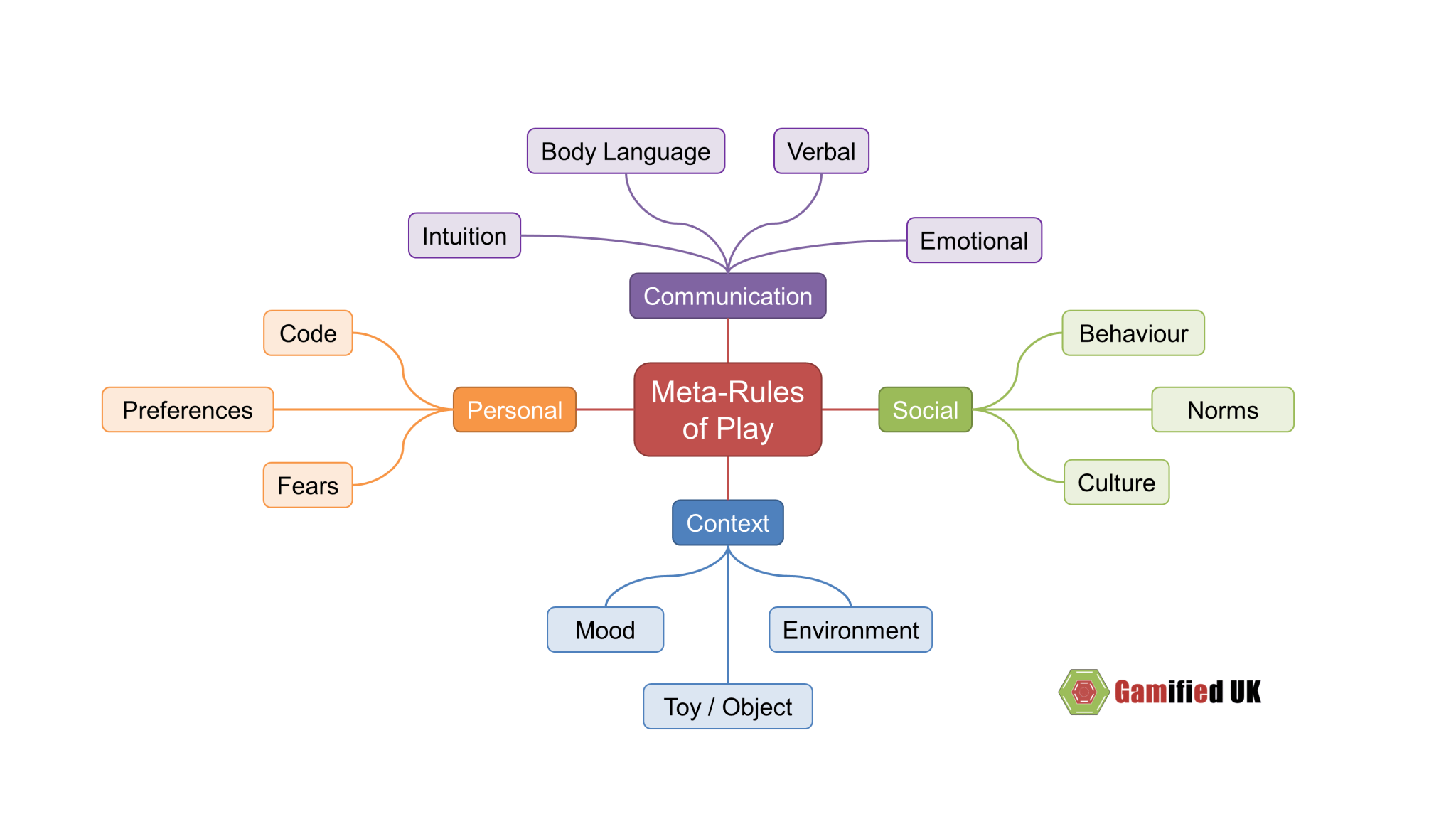No great insights into gamification in this post, more me revisiting play, toys and games – again. When I need to clear my mind of clutter, I tend to consider the nature of play. That is probably why I write about it so much! I doodle about it on the plane, at night, when I have time to kill. I always come back to play. Dutch, a friend of mine in the gamification world likened it to Einstein’s “thought experiments”. Of course, I am not comparing myself to Einstein. The only things we have / had in common is dyslexia and a love (at one time) of physics.
My most recent experiment is trying to figure out how rules affect play. When talking about play, the lack of rules is often emphasised as a big difference between games and play. Not everyone is quite as black and white on that, myself included. What play lacks, in my mind, is what I refer to as system rules. It is still beholden to other types of rules, what I am now calling inherent rules and meta-rules.
Types of Rules
Inherent Rules
Inherent rules are those rules that affect play or toys in ways that are not controlled by outside forces such as a player or a game designer. For instance, a ball has several inherent rules. It is affected by gravity, it has mass, volume, wind resistance etc. All of these things are inherent to the ball. In a game like Minecraft the inherent rules of the game are things like how high you can build, how deep you can dig, what you have to combine to make certain objects. The player plays within these inherent rules.
System Rules
System rules are rules that are added by the player or the designer that are there to create the game. If you are bouncing a ball aimlessly, this could be considered play. The inherent rules control the activity more than anything. How high the ball bounces for example. If you then decided that you have to bounce the ball as high as you can and catch it, you are adding system rules, you are creating a simple game. You are deliberately adding an obstruction to just bouncing the ball!
Meta-Rules
Meta-rules are the new one for me in this thought process. These rules are beyond what you would consider written or system imposed rules. These are fluid rules that can change moment by moment. These are the rules that define how play unfolds. These are the unspoken rules that children manage to communicate to each other when they are playing, where the situation is constantly changing, but they always seem to be able to adapt to the changes without fuss. Mrs Dawkin’s tea party takes a turn for sinister as Action Man invades and takes Teddy Ruckspin hostage. These are rules about rules, rules beyond rules, unspoken rules, unwritten rules and quite frankly – unfathomable rules to those not involved directly in the play!
Toys, Games and Play
As is usual for me, I don’t consider just games and play on their own, I always include toys. Toys can be an essential part of games and play. Toys are just objects. They have inherent rules, as I said earlier, but really they have to have other rules associated with them to be included in play and games. A ball does not play with itself and is certainly not a game without some kind of system rules. So on their own, they just have inherent rules.
Play, as discussed has inherent rules and these meta-rules. Games have system rules as well as inherent rules. A toy can exist without play or games, play can exist without toys or games. Games however, have to have play to exist.
In diagrammatic form (as is my way) this looks a bit like the following
Inherent rules affect games, play and toys. Meta-rules affect play, and in turn games (can’t have a game without play!). Finally, system rules that only affect games.
I hope this has at least been interesting for people. As I say, this is sort of my hobby – my muse if you will. Considering the nature of play helps me organise my thoughts. There is a tip for you, find something that stimulates your mind, but is not work related directly!





